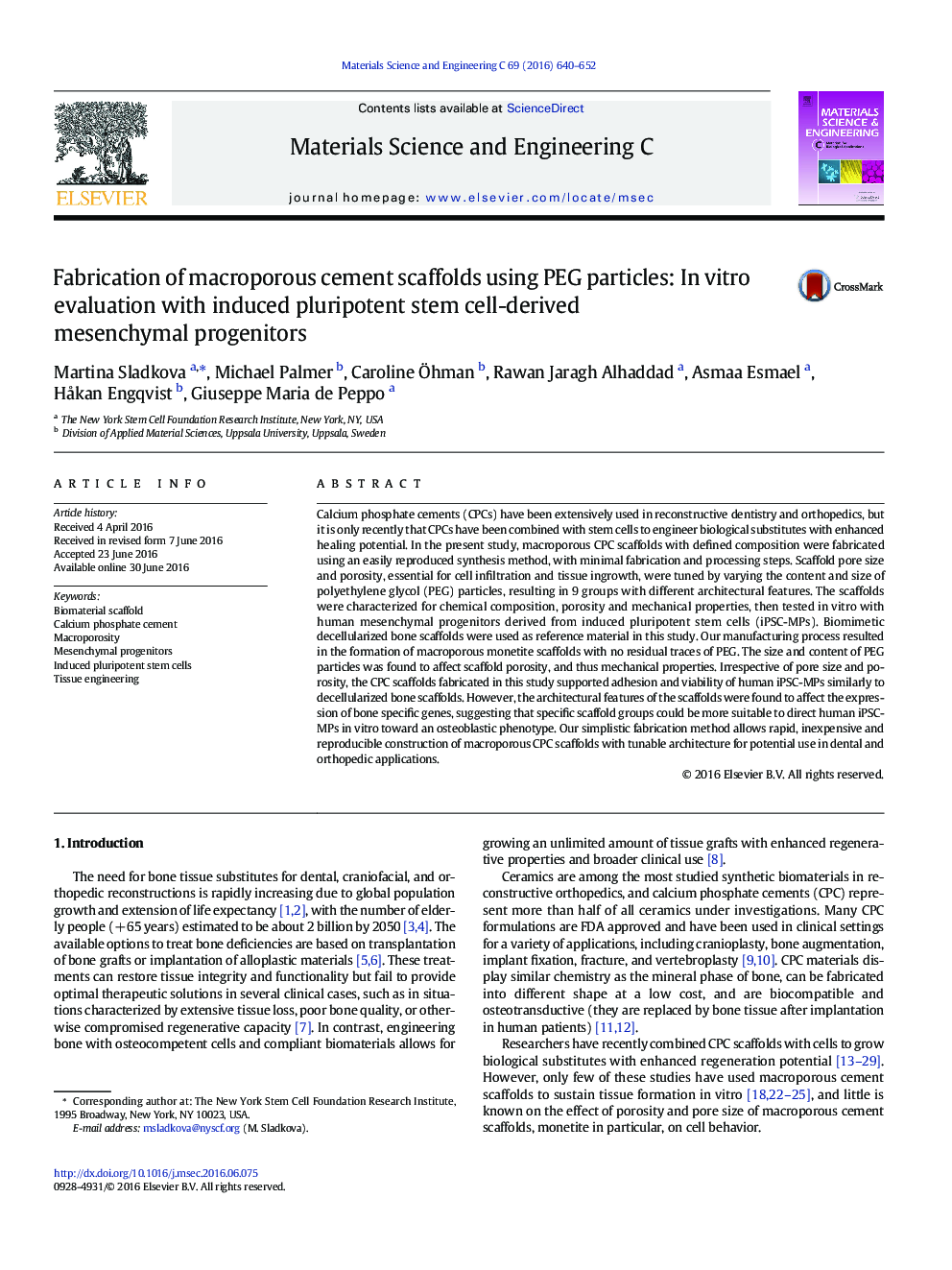| کد مقاله | کد نشریه | سال انتشار | مقاله انگلیسی | نسخه تمام متن |
|---|---|---|---|---|
| 1427897 | 1509152 | 2016 | 13 صفحه PDF | دانلود رایگان |

• Macroporous monetite scaffolds can be manufactured using PEG as porogen.
• The scaffolds support long-term culture of iPSC-derived mesenchymal progenitors.
• Scaffold architectural features affect the expression of bone-specific genes.
Calcium phosphate cements (CPCs) have been extensively used in reconstructive dentistry and orthopedics, but it is only recently that CPCs have been combined with stem cells to engineer biological substitutes with enhanced healing potential. In the present study, macroporous CPC scaffolds with defined composition were fabricated using an easily reproduced synthesis method, with minimal fabrication and processing steps. Scaffold pore size and porosity, essential for cell infiltration and tissue ingrowth, were tuned by varying the content and size of polyethylene glycol (PEG) particles, resulting in 9 groups with different architectural features. The scaffolds were characterized for chemical composition, porosity and mechanical properties, then tested in vitro with human mesenchymal progenitors derived from induced pluripotent stem cells (iPSC-MPs). Biomimetic decellularized bone scaffolds were used as reference material in this study. Our manufacturing process resulted in the formation of macroporous monetite scaffolds with no residual traces of PEG. The size and content of PEG particles was found to affect scaffold porosity, and thus mechanical properties. Irrespective of pore size and porosity, the CPC scaffolds fabricated in this study supported adhesion and viability of human iPSC-MPs similarly to decellularized bone scaffolds. However, the architectural features of the scaffolds were found to affect the expression of bone specific genes, suggesting that specific scaffold groups could be more suitable to direct human iPSC-MPs in vitro toward an osteoblastic phenotype. Our simplistic fabrication method allows rapid, inexpensive and reproducible construction of macroporous CPC scaffolds with tunable architecture for potential use in dental and orthopedic applications.
Figure optionsDownload as PowerPoint slide
Journal: Materials Science and Engineering: C - Volume 69, 1 December 2016, Pages 640–652